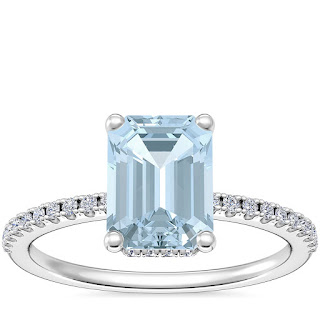Sapphires, Rubies and Emerald
Although sapphires and rubies are all different in weight and color, there is an overall consistency in their value. This applies to lesser-known gemstones such as tourmaline and alexandrite, peridots, and garnets. Color, clarity, cut, and carats are the four main characteristics that determine colored gemstones' value. The most important is color, color, and more color.
Stones with more value are rated according to their intensity and proximity to true spectral colors. The color of an emerald should be pure green. Rubies should be the deepest red. Sapphires should have a rich, deep blue. The value of a color that is not close to the ideal spectral color decreases. Burmese rubies, for example, have the best color. The most valuable rubies are those with a reddish-orange or lighter color. A ring with different gemstones in it makes the ring more colorful and unique. Ruby and Emerald work very well together.
The intensity or saturation of color is measured. This refers to the color's vividness. It also measures the hue or how close the color is to the pure spectrum color; tone, which indicates how dark or light the color is, and finally, the distribution of color or how evenly the color is distributed across the stone.
Other factors such as clarity, cut, and carats have less impact on a stone's value than stones with the best colors, but they can inversely affect a stone's value if it is not pure.
Clarity is a lack of internal flaws visible at a magnification level of 10. Many colored gemstones have flaws or inclusions. Emeralds are a prime example of a gemstone with flaws. The flaws are more obvious the lighter the stone, and the darker the stone, the less apparent they will be. It is also affected by the type and location of the flaws in the stone.
A cut is a way to highlight the best features of a particular stone type. The cut highlights the fire, color, and brilliance of the stones, without sacrificing anyone. A cabochon cut is a way to present colored gemstones in a smooth, rounded form. Cabochon-cut sapphires, rubies, and diamonds often reflect stars and are called star sapphires or star rubies.
Carat is the weight of the gemstone, not its size. Different gemstone types have different weights when they are cut to the same size. A ruby's density is higher than an emerald's, so a one-carat ruby will weigh less than an identically cut emerald. You can also make stones look larger. Certain gemstones, such as tourmalines or amethysts, are more easily available in heavier weights. A tourmaline of 18 carats will have a lower value per carat than an alexandrite of 5 cars. This is because larger tourmaline stones are more prevalent than larger alexandrite ones.




Comments
Post a Comment